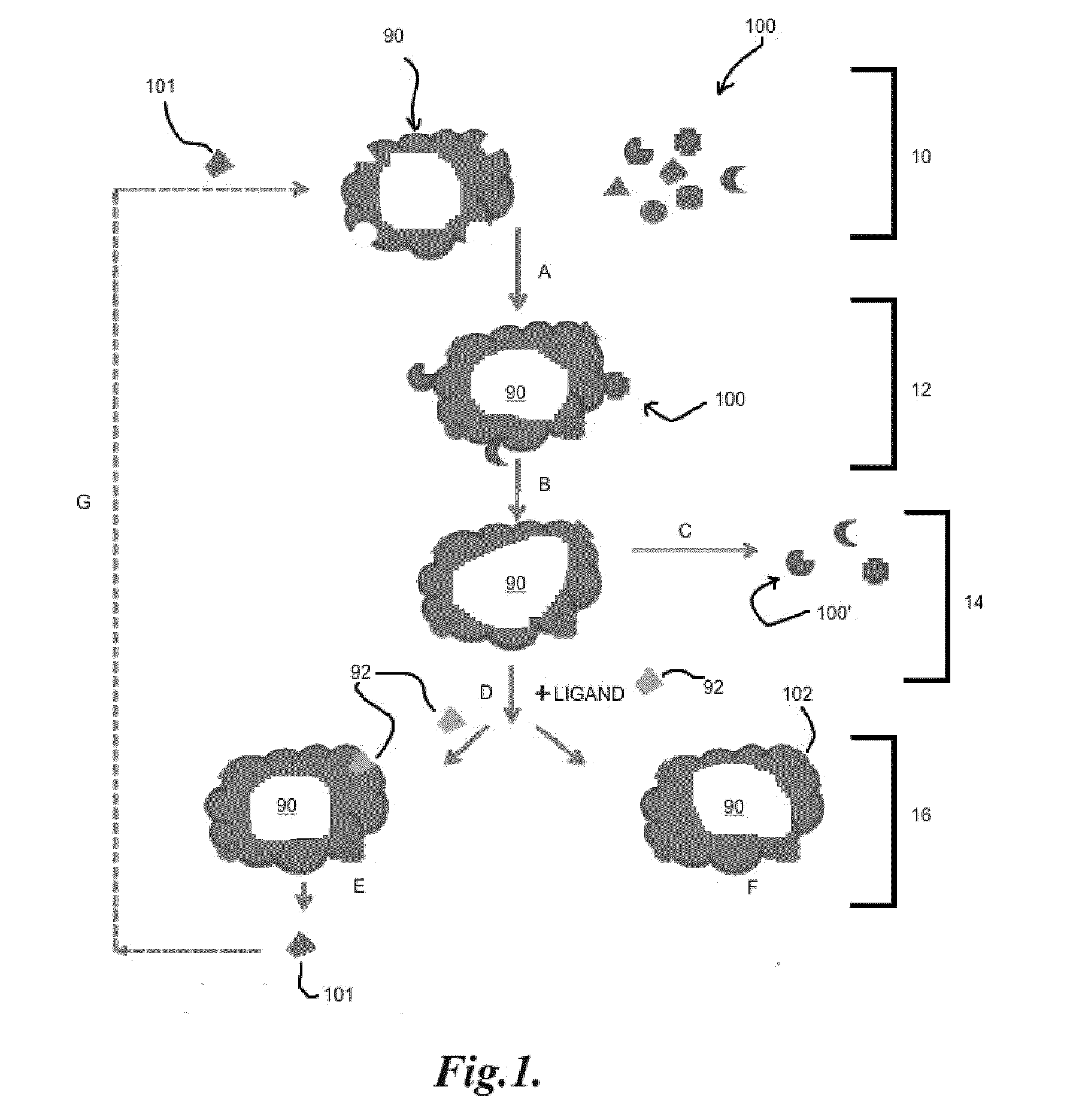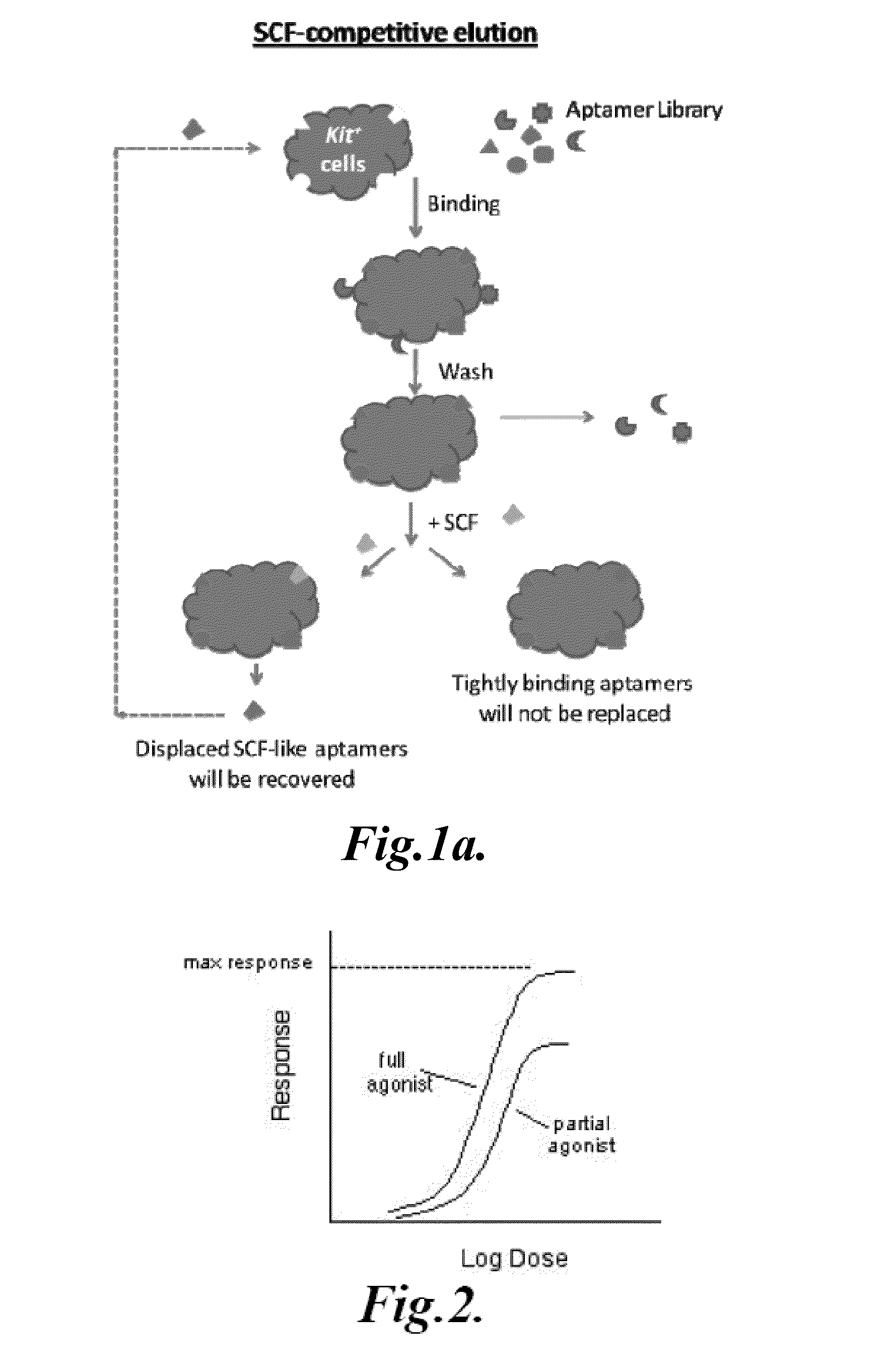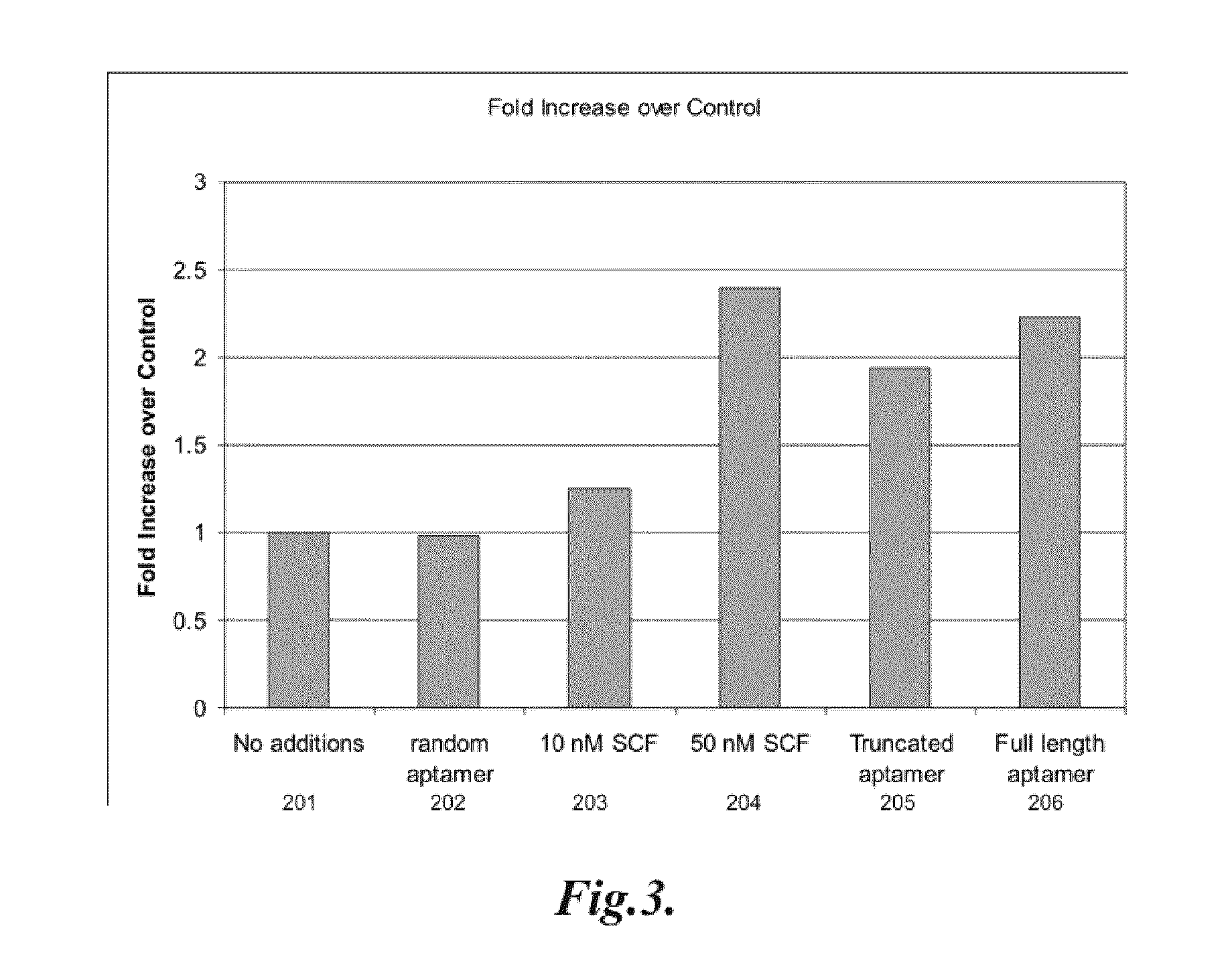Biomimetic nucleic acids
a technology of nucleic acids and biomimetic properties, applied in the field of biomimetic nucleic acids, can solve the problems of difficult production, difficult production, and inability to maintain the self-renewal of stem cells by soluble mediators alone, and achieve the effect of low cost and production on a large scal
- Summary
- Abstract
- Description
- Claims
- Application Information
AI Technical Summary
Benefits of technology
Problems solved by technology
Method used
Image
Examples
examples
1. Generating Kit Agonist Nucleic Acids Via SELEX
[0040]To select an SCF-mimetic agonist aptamer using SELEX, as illustrated in FIG. 1a, an aptamer library initially was screened against a cell line, EML clone 1, expressing receptors for SCF (kit). During the initial SELEX process, aptamers binding to a variety of cell surface structures were selected before non-specifically bound and low affinity aptamers were substantially eliminated from the pool. After the first two rounds of selection, the cells with bound aptamers were incubated with an excess of SCF to predominantly displace kit-bound aptamers into the medium where they can be collected. This displacement step helped to ensure that at least some of the aptamers would have binding affinities substantially similar to native SCF, which was useful in selecting aptamers with the desired kit agonist activity. Aptamers having very high affinities acted as antagonists, trigger receptor desensitization or internalization due to persist...
PUM
| Property | Measurement | Unit |
|---|---|---|
| volume | aaaaa | aaaaa |
| concentration | aaaaa | aaaaa |
| affinity | aaaaa | aaaaa |
Abstract
Description
Claims
Application Information
 Login to View More
Login to View More - R&D
- Intellectual Property
- Life Sciences
- Materials
- Tech Scout
- Unparalleled Data Quality
- Higher Quality Content
- 60% Fewer Hallucinations
Browse by: Latest US Patents, China's latest patents, Technical Efficacy Thesaurus, Application Domain, Technology Topic, Popular Technical Reports.
© 2025 PatSnap. All rights reserved.Legal|Privacy policy|Modern Slavery Act Transparency Statement|Sitemap|About US| Contact US: help@patsnap.com



